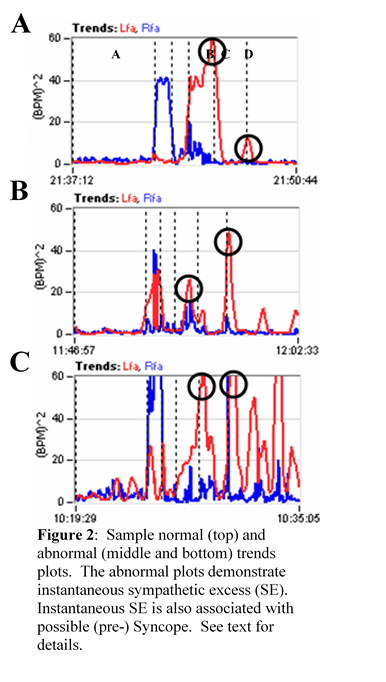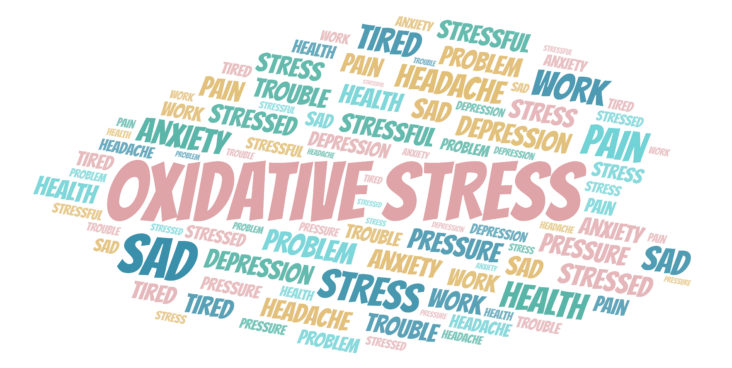Click here to download this post
Click here to download the full 5 Part Article
Notes: This is the fifth in a series of 5 blog posts about COVID-19 and Autonomic Dysfunction. This a pre-publication release that will be featured in a major medical journal.
Coronavirus Induces Oxidative Stress Leading to Autonomic Dysfunction Often With Delayed Symptom Onset
Heather L. Bloom, MD1 and Joseph Colombo, PhD, DNM, DHS2
- Electrophysiology, Atlanta Veterans Affairs Medical Center and Emory University Medical School, Atlanta, GA bloom@gmail.com
- Parasympathetic & Sympathetic Nervous System Consultant, Franklin Cardiovascular Associates, PA & Autonomic Dysfunction and POTS Center, Sewell, NJ, and Senior Medical Director & CTO, Physio PS, Inc., Atlanta, GA, dovetech@erols.com
Correspondence should be addressed to Dr. Colombo, dovetech@erols.com
CONCLUSIONS
In all, poor brain and cardiac perfusion is often the result of Oxidative Stress mediated P&S Dysfunction and if both are not treated they will augment and amplify each other and their resulting symptoms. Unfortunately, most of the therapies for P&S Dysfunction are off-label. Also, they are most effective at low doses. High doses cause side effects which lead to or are caused by additional P&S Dysfunctions which are induced by these high dose pharmaceuticals. Fortunately, Antioxidants are known to also help treat P&S Dysfunction as well as Oxidative Stress. Either way, P&S monitoring provides an objective, scientifically-based, outcomes-driven assessment of the individual patient’s responses to disease, disorder and therapy. This helps to titrate therapy specifically for the individual patient, using the individual as their own baseline. This also helps to identify medications that are not helping and perhaps may be harming the patient.
Relieving Oxidative Stress and the associated P&S Dysfunction helps to relieve lightheadedness and dizziness, fatigue, sleep difficulties, GI symptoms (upper or lower), Anxiety/Depression, difficult to control BP, blood glucose or hormone levels, headache or migraine, brain-fog, cognitive or memory difficulties, etc. In doing so, patients have improved quality of life and productivity, improved outcomes, reduced hospitalizations and re-hospitalizations, and thereby reduced healthcare costs. The additional information from P&S Monitoring with therapy individualized for the patient helps physicians go beyond merely managing the disorder, helping physicians to restore health and promote wellness as well.
DATA AVAILABILITY
Patient data are from patient records and files and are therefore HIPAA protected. Therefore, data availability is limited. You may contact the corresponding author to request access and limited access may be granted.
CONFLICTS OF INTEREST
Dr. Bloom has no conflicts of interest. Dr. Colombo is Senior Medical Director and Chief Technology Officer of Physio PS, Inc., the provider of the P&S Monitoring technology.
FUNDING
This project was not funded under any grant or contract.
REFERENCES
_________________
[1] Murray GL. COVID-19 cardiac complications: Is an easy, safe treatment strategy right under our noses? J Cardiovasc Dis Diag. 2020; 8:5. doi: 10.37421/jcdd.2020.8.415.
2 DePace NL, Colombo J. Autonomic and Mitochondrial Dysfunction in Clinical Diseases: Diagnostic, Prevention, and Therapy. Springer Science + Business Media, New York, NY, 2019.
3 Acosta C, DePace NL, DePace NL, Kaczmarski K, Pinales JM, and Colombo J. Antioxidants effect changes in systemic parasympathetic and sympathetic nervous system responses and improve outcomes. Cardio Open. 2020; 5(1): 26-36. doi: 10.33140/COA.05.01.04
4 Colombo J, Arora RR, DePace NL, Vinik AI. Clinical Autonomic Dysfunction: Measurement, Indications, Therapies, and Outcomes. Springer Science + Business Media, New York, NY, 2014.
5 Vinik A, Ziegler D. Diabetic cardiovascular autonomic neuropathy. Circulation. 2007; 115: 387-397.
6 Vinik AI, Maser RE, Nakave AA. Diabetic cardiovascular autonomic nerve dysfunction. US Endocrine Disease. 2007; Dec: 2-9.
7 Malik, M. The Task Force of the European Society of Cardiology and the North American Society of Pacing and Electrophysiology. Heart rate variability, standards of measurement, physiological interpretation, and clinical use. Circulation. 1996; 93:1043-1065.
8 Malik, M. and the Task Force of the European Society of Cardiology and the North American Society of Pacing and Electrophysiology. Heart rate variability, standards of measurement, physiological interpretation, and clinical use. European Heart Journal. 1996, 17: 354-381.
9 Akselrod S, Oz O, Greenberg M, Keselbrener L. Autonomic response to change of posture among normal and mild-hypertensive adults: investigation by time-dependent spectral analysis. J Auton Nerv Syst. 1997 May 12;64(1):33-43.
10 Piña IL, Di Palo KE, Ventura HO. Psychopharmacology and Cardiovascular Disease. JACC. 2018; 71(20): 2346-2359.
11 Arora RR, Bulgarelli RJ, Ghosh-Dastidar S, Colombo J. Autonomic mechanisms and therapeutic implications of postural diabetic cardiovascular abnormalities. J Diabetes Science and Technology. 2008; 2(4): 568-71.
12 DePace NL, Vinik AI, Acosta C and Colombo J. Oral vasoactive medications: A Review of Midodrine, Droxidopa, and Pseudoephedrine as Applied to Orthostatic Dysfunction. NEJM. 2020. Submitted.
13 Vinik AI, Bloom HL, Colombo J. Differential effects of adrenergic antagonists (carvedilol vs. metoprolol) on parasympathetic and sympathetic activity: A comparison of measures. Heart International. Heart Int. 2014; 9(1): 7-14; DOI: 10.5301/HEART.2014.12495.
14 Bloom HL, Vinik AI, Colombo J. Differential effects of adrenergic antagonists (carvedilol vs. metoprolol) on parasympathetic and sympathetic activity: A comparison of clinical results. Heart Int. 2014 ; 9 (1): 15-21; DOI: 10.5301/HEART.2014.12496.
15 Murray GL and Colombo J. (R)Alpha Lipoic Acid is a Safe, Effective Pharmacologic Therapy of Chronic Orthostatic Hypotension Associated with Low Sympathetic Tone. Int J Angiol. In Print, 2018.
KEY WORDS
Coronavirus, Parasympathetic, Sympathetic, Oxidative Stress, Antioxidants
ABBREVIATIONS
ALA Alpha-Lipoic Acid
ANS Autonomic Nervous System
CoQ10 Co-enzyme Q10
COVID-19 Coronavirus (SARS-CoV-2)
P&S Parasympathetic and Sympathetic
PE Parasympathetic Excess
POTS Postural Orthostatic Tachycardia Syndrome
SE Sympathetic Excess
SW Sympathetic Withdrawal
[i] Colombo J, Arora RR, DePace NL, Vinik AI. Clinical Autonomic Dysfunction: Measurement, Indications, Therapies, and Outcomes. Springer Science + Business Media, New York, NY, 2014.
[ii] Vinik A, Ziegler D. Diabetic cardiovascular autonomic neuropathy. Circulation. 2007; 115: 387-397.
[iii] Vinik AI, Maser RE, Nakave AA. Diabetic cardiovascular autonomic nerve dysfunction. US Endocrine Disease. 2007; Dec: 2-9.
[iv] Malik, M. The Task Force of the European Society of Cardiology and the North American Society of Pacing and Electrophysiology. Heart rate variability, standards of measurement, physiological interpretation, and clinical use. Circulation. 1996; 93:1043-1065.
[v] Malik, M. and the Task Force of the European Society of Cardiology and the North American Society of Pacing and Electrophysiology. Heart rate variability, standards of measurement, physiological interpretation, and clinical use. European Heart Journal. 1996, 17: 354-381.
[vi] Akselrod S, Oz O, Greenberg M, Keselbrener L. Autonomic response to change of posture among normal and mild-hypertensive adults: investigation by time-dependent spectral analysis. J Auton Nerv Syst. 1997 May 12;64(1):33-43.








